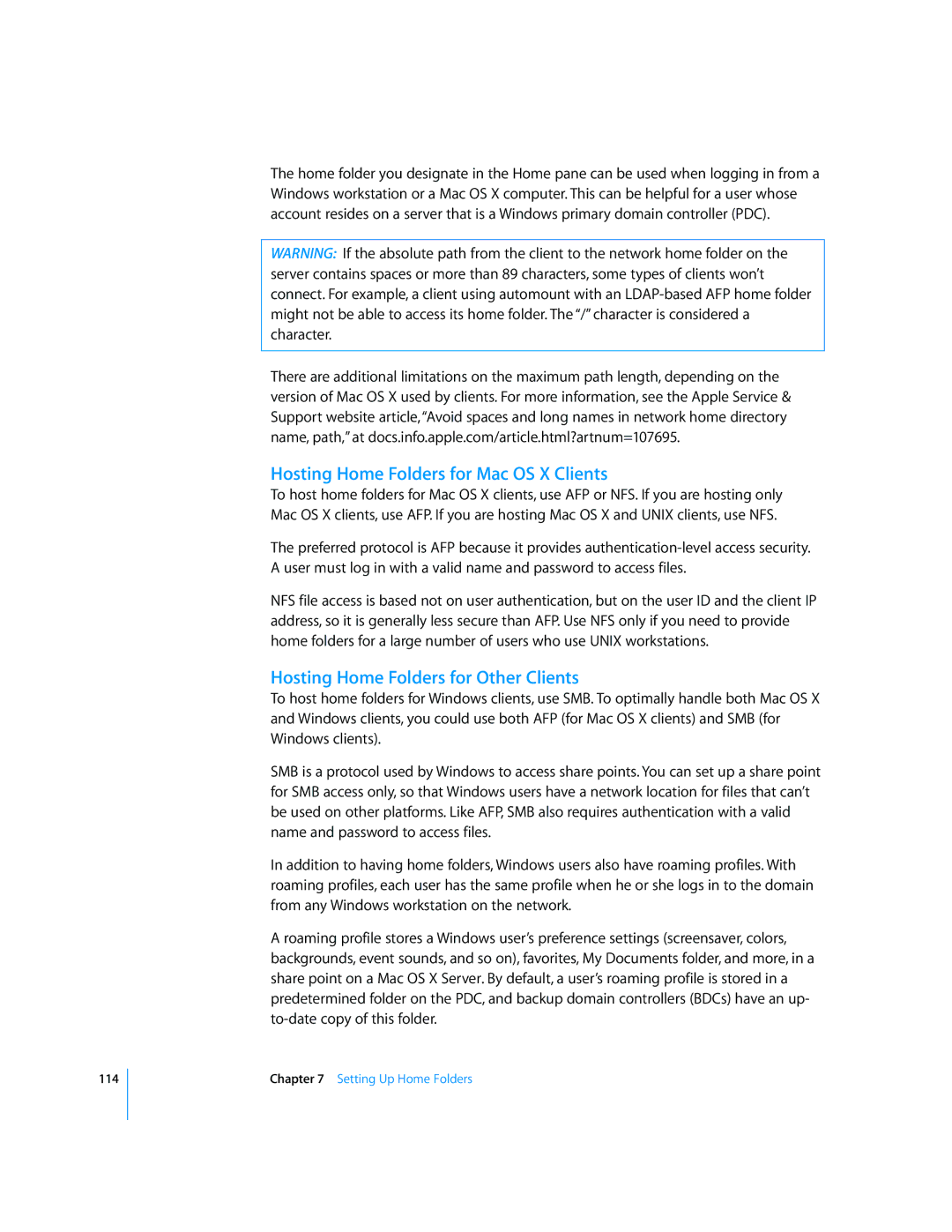
114
The home folder you designate in the Home pane can be used when logging in from a Windows workstation or a Mac OS X computer. This can be helpful for a user whose account resides on a server that is a Windows primary domain controller (PDC).
WARNING: If the absolute path from the client to the network home folder on the server contains spaces or more than 89 characters, some types of clients won’t connect. For example, a client using automount with an
There are additional limitations on the maximum path length, depending on the version of Mac OS X used by clients. For more information, see the Apple Service & Support website article, “Avoid spaces and long names in network home directory name, path,” at docs.info.apple.com/article.html?artnum=107695.
Hosting Home Folders for Mac OS X Clients
To host home folders for Mac OS X clients, use AFP or NFS. If you are hosting only Mac OS X clients, use AFP. If you are hosting Mac OS X and UNIX clients, use NFS.
The preferred protocol is AFP because it provides
NFS file access is based not on user authentication, but on the user ID and the client IP address, so it is generally less secure than AFP. Use NFS only if you need to provide home folders for a large number of users who use UNIX workstations.
Hosting Home Folders for Other Clients
To host home folders for Windows clients, use SMB. To optimally handle both Mac OS X and Windows clients, you could use both AFP (for Mac OS X clients) and SMB (for Windows clients).
SMB is a protocol used by Windows to access share points. You can set up a share point for SMB access only, so that Windows users have a network location for files that can’t be used on other platforms. Like AFP, SMB also requires authentication with a valid name and password to access files.
In addition to having home folders, Windows users also have roaming profiles. With roaming profiles, each user has the same profile when he or she logs in to the domain from any Windows workstation on the network.
A roaming profile stores a Windows user’s preference settings (screensaver, colors, backgrounds, event sounds, and so on), favorites, My Documents folder, and more, in a share point on a Mac OS X Server. By default, a user’s roaming profile is stored in a predetermined folder on the PDC, and backup domain controllers (BDCs) have an up-
Chapter 7 Setting Up Home Folders
